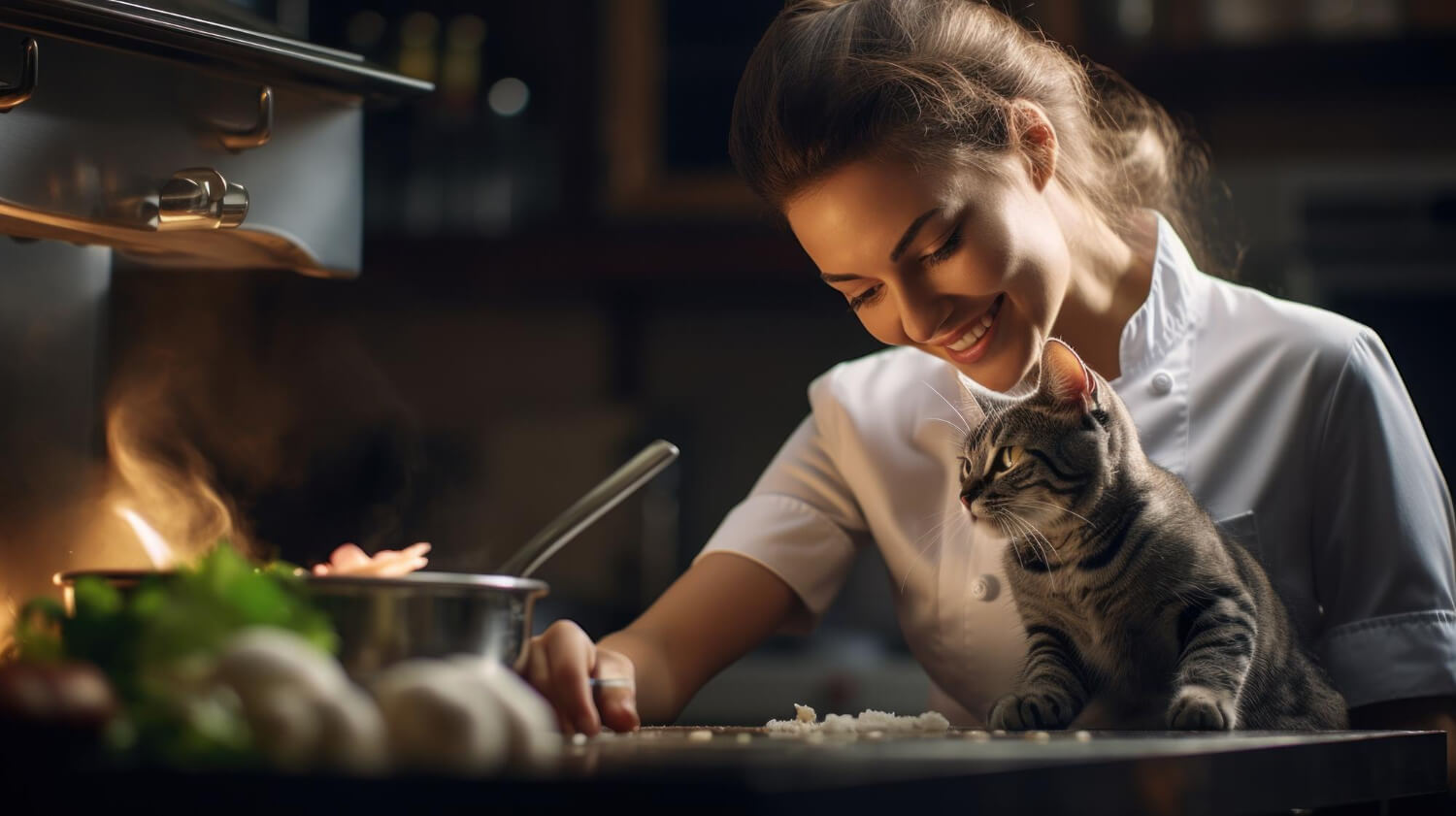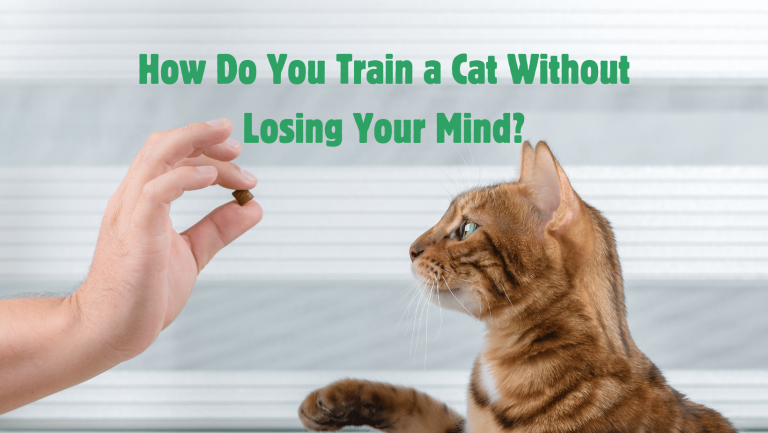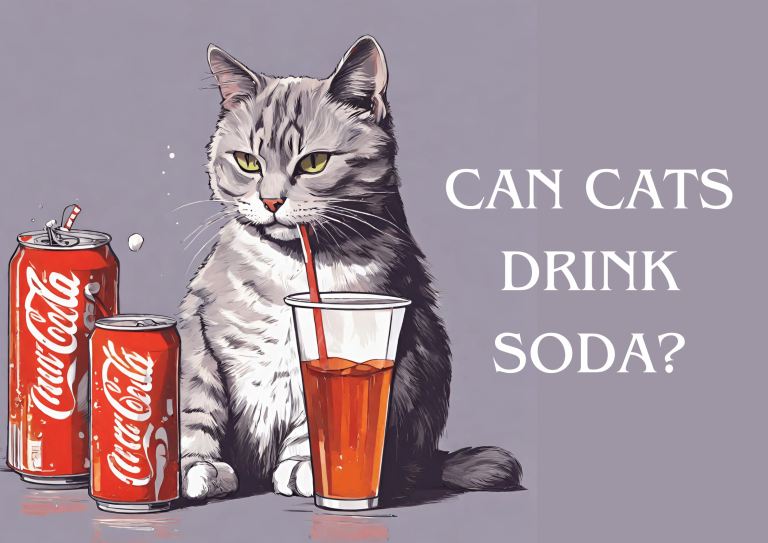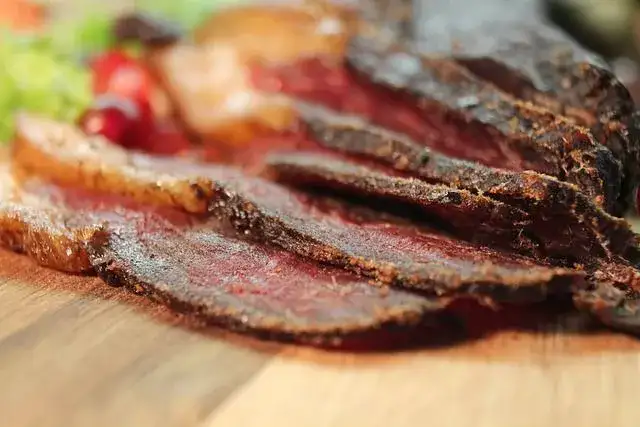How to Make Homemade Cat Food at Home?
Thinking about taking control of your cat’s diet with fresh, wholesome ingredients?
Making homemade cat food can be a fantastic way to nourish your cat’s diet. But before you go straight to the kitchen, it’s important to have the right information about what your cat can eat and what not.
When I started feeding my cat homemade food, I was full of questions, so I know where you’re coming from. In this guide, I will equip you with the knowledge and resources to become a confident cat chef, whipping up delicious and nutritious meals that are purrfectly suited for your furry friend.
Key takeaways:
- Cats are obligate carnivores and need a diet rich in animal-based protein, taurine, and healthy fats.
- Consult a veterinarian or veterinary nutritionist before starting homemade food to develop a safe and complete diet.
- Gradually transition your cat to homemade food to avoid digestive upset.
- There’s no single “best” homemade food – individual cat needs vary.
- Pay attention to your cat’s reaction to new food.
- What are the Pros and Cons of Making Homemade Cat Food
- What Nutrients Does My Cat Need?
- How can I Ensure the Recipes I Choose Provide Balanced Nutrition?
- Kitchen Cat Chef Tips: How to Make Homemade Cat Food
- How do I Transition my Cat to Homemade Cat Food?
- Homemade Cat Food Recipes
- What is the Best Homemade Food for Cats?
What are the Pros and Cons of Making Homemade Cat Food
Pros of Homemade Cat Food
There are several potential benefits to feeding your cat a homemade diet. Perhaps the most appealing is the increased control over ingredients.
You can choose high-quality protein sources like lean meats and organ meats, and avoid ingredients you might not want your cat to consume, such as artificial flavors, colors, and preservatives. This can be especially helpful for cats with allergies or sensitivities.
Homemade food can be a great way to tempt a picky eater or entice a sick cat to consume more nutrients. Some pet owners believe that fresh, homemade cat food offers superior palatability and overall health benefits for their cats.
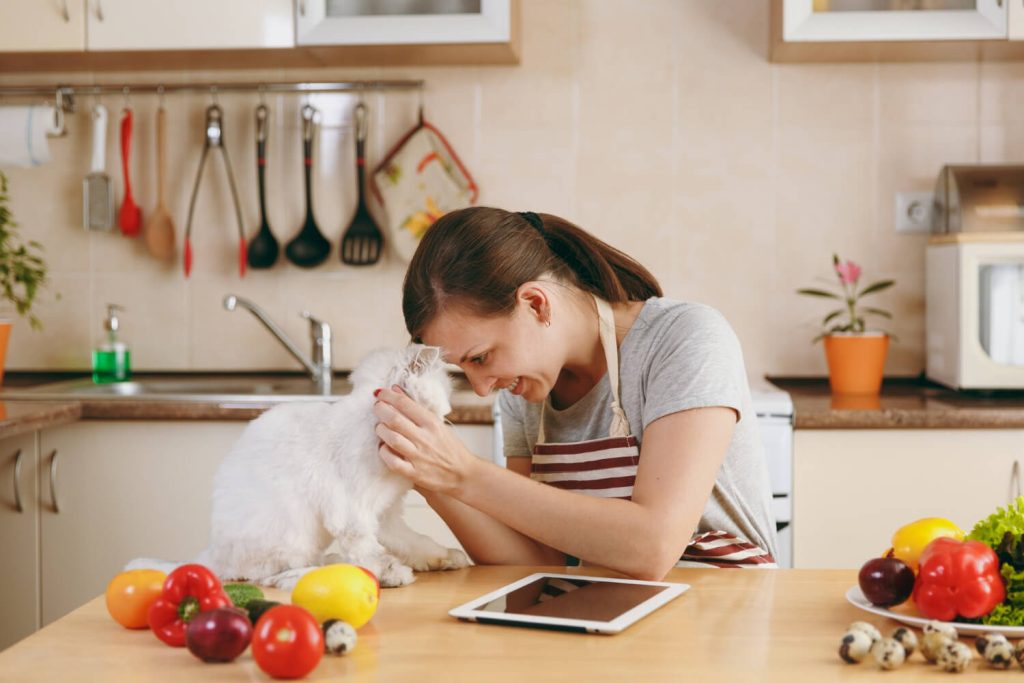
Cons of Homemade Cat Food
While there are potential advantages, there are also drawbacks to consider before making homemade cat food. The biggest challenge is ensuring a nutritionally balanced diet. Cats have specific dietary needs, and creating a recipe that meets all those requirements can be difficult.
Imbalances in protein, taurine, or other essential nutrients can lead to health problems down the road. Consulting with a veterinarian or veterinary nutritionist is important to develop a safe and complete homemade cat food diet.
Another significant con is the time commitment. Preparing and portioning homemade food can be more labor-intensive than simply scooping kibble. And there’s also the issue of cost. High-quality ingredients can make homemade cat food more expensive than some commercially available options.
Also, you will need to make sure your cat is drinking enough during this process. And if you know your cat doesn’t drink much on their own, you will need to incorporate wetness into their diet.
What Nutrients Does My Cat Need?
Cats, unlike us humans, are obligate carnivores. This means their bodies are specifically designed to thrive on a diet rich in animal-based nutrients. Here’s a breakdown of the key nutrients your feline friend needs:
- Protein: The cornerstone of a cat’s diet, protein provides essential amino acids that their bodies can’t produce on their own. These building blocks are crucial for muscle development, repair, and overall organ function. Look for lean meats, poultry, and fish in your cat’s food to ensure they get their protein fix.
- Fats: Don’t be fooled by the word “fat.” Healthy fats are a vital energy source for your cat, aiding in digestion and nutrient absorption. They also play a role in maintaining healthy skin and a shiny coat. Chicken fat, salmon oil, and other animal fats are excellent sources for your cat.
- Taurine: This unique amino acid is essential for feline vision and heart health. Unlike most other mammals, cats can’t synthesize taurine on their own, so it must be included in their diet. Look for foods that specifically mention taurine content, or consider adding taurine supplements if your vet recommends it.
- Vitamins and Minerals: Just like us, cats require a variety of vitamins and minerals for optimal health. These micronutrients play a role in everything from bone development and immune function to proper nerve signaling and metabolism. A balanced cat food should contain essential vitamins like A, D, and E, along with minerals like calcium, phosphorus, and potassium.
Are carbohydrates Necessary in Homemade Cat Food, and if so, What are Some Options?
Carbohydrates are not essential for cats, but some homemade cat food recipes include them. Carbohydrates provide energy, fiber, and some essential nutrients. However, cats have a limited ability to digest carbohydrates compared to other animals.
So, it’s essential to choose carbohydrates that are easily digestible for cats. Some options for carbohydrates in homemade cat food include cooked grains like rice or oats and cooked vegetables like carrots or peas. These ingredients should be prepared thoroughly to make them easier for your cat to digest.
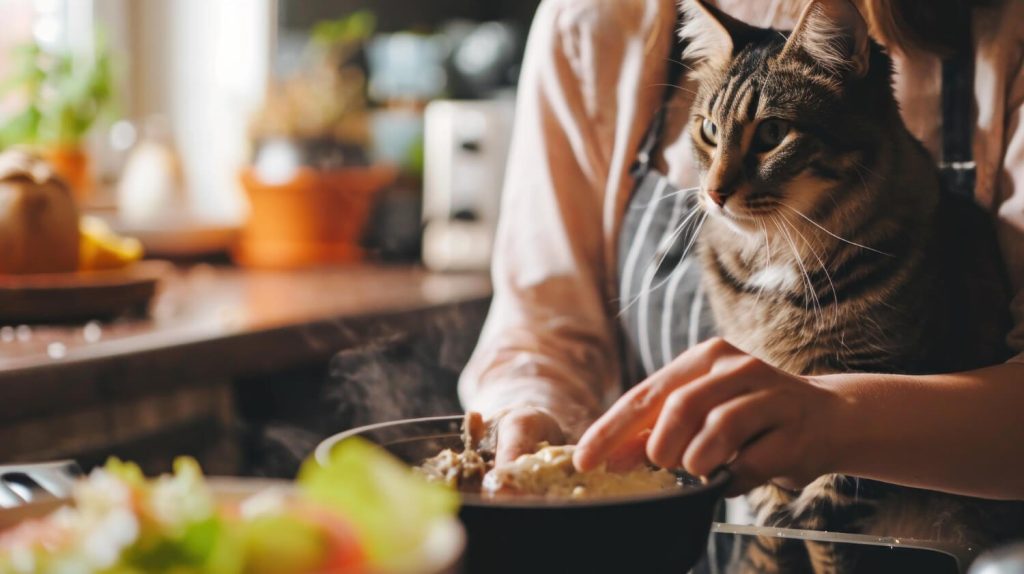
It’s important to consult with your veterinarian to determine if carbohydrates are suitable for your cat’s specific dietary needs.
What are Healthy Fat Sources Suitable for Homemade Cat Food?
Healthy fat sources for homemade cat food are important for keeping your cat strong and healthy. One good fat source is fish oil, which has omega-3 fatty acids. These help cats have healthy skin and fur.
Another option is olive oil, which is rich in monounsaturated fats. These fats are good for a cat’s heart and overall health. You can also use fatty fish like salmon or mackerel in homemade cat food. These fish are tasty for cats and provide beneficial fats. It’s important to use fats in the right amounts when making cat food at home.
Too much fat can upset a cat’s stomach or lead to weight gain. So, it’s best to use fats in moderation and consult with a veterinarian if you’re unsure. Overall, choosing healthy fat sources for homemade cat food can help keep your furry friend happy and healthy.
How can I Ensure the Recipes I Choose Provide Balanced Nutrition?
To make sure the recipes you pick give your cat all the right nutrients, you should first check if they include important things like protein, fats, vitamins, minerals, and water.
Protein helps your cat’s muscles stay strong, and fats give them energy. Vitamins and minerals keep their body working well, and water keeps them hydrated. When choosing recipes, look for a good balance of these things to keep your cat healthy and happy.
It’s also a good idea to consult with a vet before starting any new diet for your cat. They can help you understand what your cat needs and give you advice on which recipes might be best.
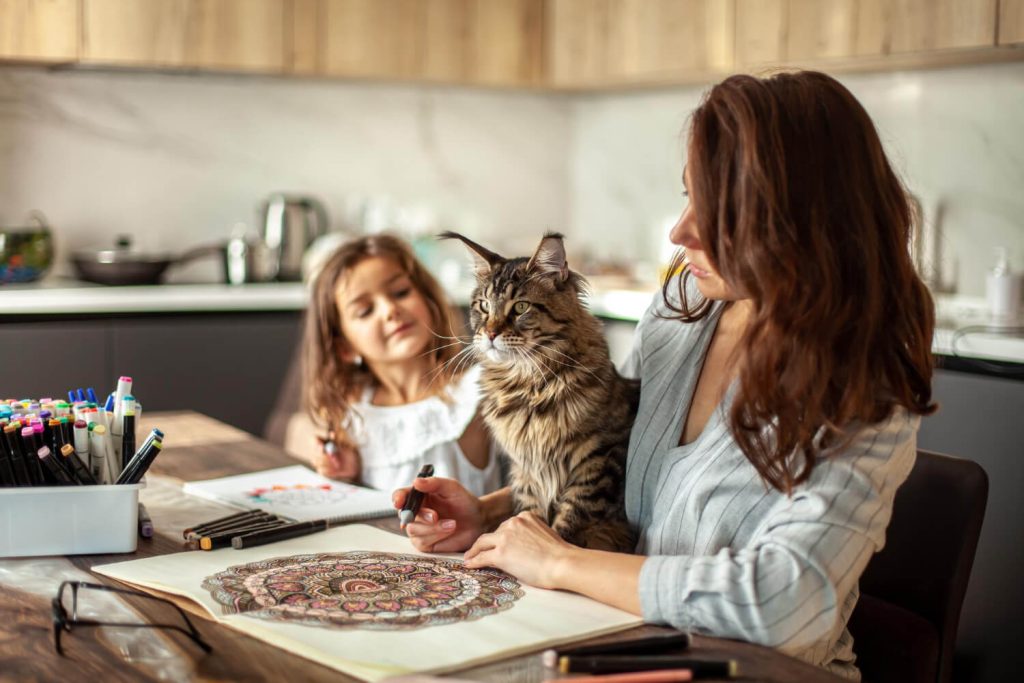
Look for recipes published on veterinary websites, in reputable pet publications, or from organizations like the American College of Veterinary Nutrition. These sources prioritize a balanced approach, ensuring your cat receives the right amount of protein, fat, taurine, vitamins, and minerals.
When trying out new recipes, pay attention to how your cat reacts. If they seem to enjoy the food and stay active and healthy, it’s a good sign that the recipe is providing balanced nutrition.
However, if your cat starts to show signs of being unwell or lacking energy, it might be a sign that the recipe isn’t quite right for them. In that case, you may need to adjust the recipe or try something different until you find the perfect balance for your catto.
Kitchen Cat Chef Tips: How to Make Homemade Cat Food
Making food for your cat can be a fun and rewarding experience, but it’s important to keep safety and hygiene in mind. Here are some pawsome tips to turn you into a purrfect kitchen cat chef:
- Choose Your Recipe Wisely. Safety first! Look for recipes formulated by veterinarians or veterinary nutritionists. These recipes are specifically designed to meet your cat’s unique dietary needs. Explore reputable online resources or consult veterinary publications for inspiration.
- Gather Your Ingredients. After selecting a recipe, check that you have all the required items on hand. Fresh, high-quality protein sources like lean meats, poultry, or fish are key. Don’t forget to include healthy fats like salmon oil or chicken fat, and consult the recipe for any additional vitamins or mineral supplements that might be required.
- Prepare with Care. When handling raw ingredients, prioritize hygiene. Wash your hands thoroughly and use separate utensils and cutting boards for raw meat to prevent cross-contamination. If the recipe involves cooking, ensure meats reach an internal temperature that eliminates harmful bacteria.
- Portion and Store. Once prepared, divide the food into individual portions to avoid overfeeding. Store leftovers in airtight containers in the refrigerator for up to 3 days, or freeze them in portioned containers for longer-term storage. Remember, always thaw frozen food completely before serving it to your cat.
How do I Transition my Cat to Homemade Cat Food?
Switching your cat to a homemade diet requires a gradual approach to avoid digestive upset. Here’s how to make the transition smooth:
- Start Small, Start Slow: Begin by introducing a tiny amount of the homemade food mixed in with your cat’s current food. It’s best to start with just a teaspoon or two. Over the course of a week to ten days, gradually increase the amount of homemade food while decreasing the amount of their usual kibble or canned food. Monitor your cat’s appetite and droppings during this time.
- Listen to Your Cat’s Belly: If your cat seems to have digestive problems like diarrhea or constipation, slow down the transition even further. It’s more important to prioritize your cat’s comfort than sticking to a strict schedule.
- Respect Picky Eaters: Some cats can be finicky about new foods. If your cat initially refuses the homemade food, don’t despair! Try enticing them with a sprinkle of crumbled freeze-dried treats or a drizzle of warm water to enhance the aroma. Be patient and persistent, most cats will eventually come around.
- Keep it Consistent: Maintain a consistent feeding schedule throughout the transition. This helps regulate your cat’s digestive system and makes them less likely to experience tummy troubles.
Homemade Cat Food Recipes
Here are a few simple homemade cat food recipes:
Basic Chicken and Rice Homemade Cat Food Recipe
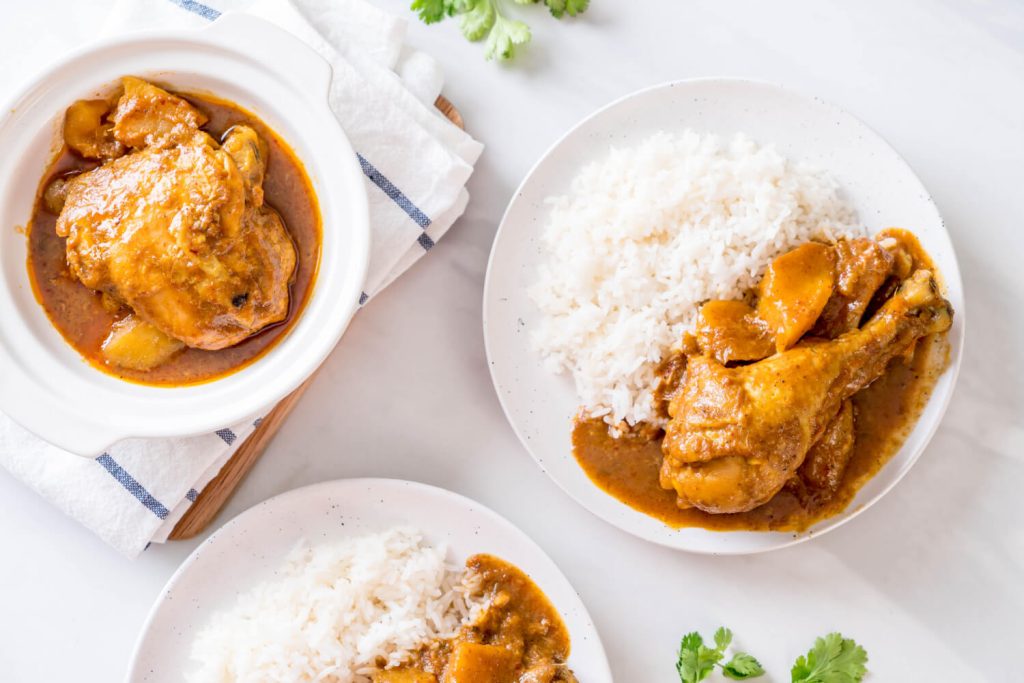
Ingredients:
1 lb boneless, skinless chicken thighs
1 cup cooked rice
1 tablespoon olive oil
1/4 cup chicken broth (low-sodium, without onions)
Instructions:
- Cook the chicken thighs in a skillet over medium heat until fully cooked.
- Once cooked, chop the chicken into small pieces.
- In a large bowl, mix the cooked chicken with cooked rice.
- Add olive oil and chicken broth to the mixture and stir until well combined.
- Serve a small portion to your cat once cooled. The remaining portion can be kept in the fridge for up to three days.
Tuna and Vegetable Homemade Cat Food Recipe
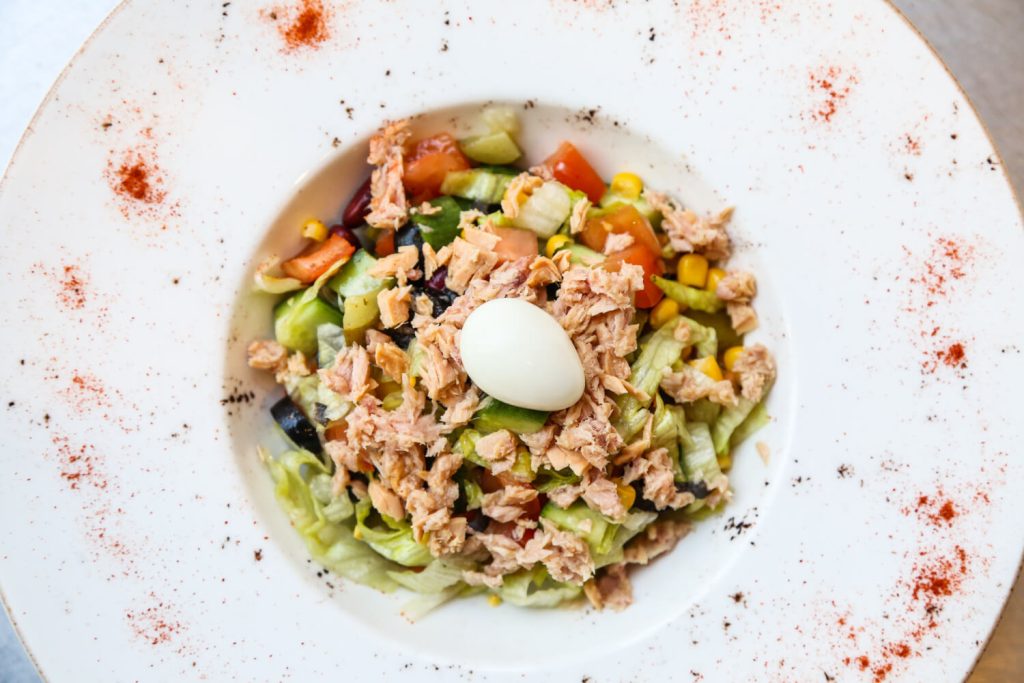
Ingredients:
1 can of tuna in water (drained)
1/2 cup cooked and mashed vegetables (e.g., carrots, peas)
1 tablespoon olive oil
1/4 cup water or low-sodium chicken broth (without onions)
Instructions:
- In a mixing bowl, combine the drained tuna with mashed vegetables.
- Add olive oil and water (or chicken broth) to the mixture and stir until well combined.
- Serve a small portion to your cat. The remaining portion can be kept in the fridge for up to three days.
Beef and Liver Homemade Cat Food Recipe
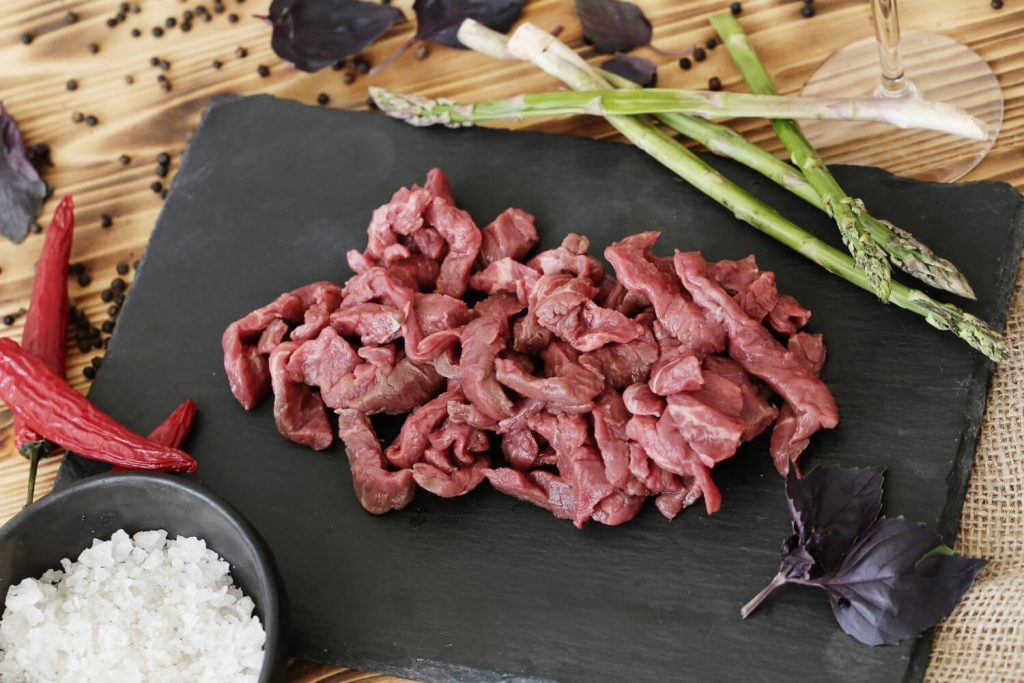
Ingredients:
1/2 lb lean ground beef
1/4 lb beef liver, chopped
1/2 cup cooked quinoa
1 tablespoon fish oil
1/4 cup water or low-sodium beef broth (without onions)
Instructions:
- In a pan over medium heat, cook the ground meat until browned. Drain excess fat.
- In the same skillet, cook the chopped liver until fully cooked.
- Combine the cooked quinoa and meat and liver in a big bowl.
- Add fish oil and water (or beef broth) to the mixture and stir until well combined.
- Serve a small portion to your cat. Leftovers can be kept in the fridge for up to three days.
These recipes provide a balanced mix of protein, carbohydrates, and healthy fats for your cat’s nutritional needs. But remember to consult with your veterinarian before making any significant changes to your cat’s diet.
What is the Best Homemade Food for Cats?
There isn’t a single “best” homemade food for all cats. Every feline friend has unique needs just like us, based on factors like age, activity level, and any underlying health conditions. This is why a one-size-fits-all approach to homemade cat food doesn’t work:
- Individual Needs. A growing kitten requires a different nutritional profile than a senior cat. Similarly, an active indoor cat might need more calories than a laid-back couch potato. A homemade recipe that perfectly suits one cat might not be ideal for another.
- Nutritional Balance. Creating a balanced meal from scratch can be tricky. Cats have specific needs for protein, fat, taurine, vitamins, and minerals. An unbalanced diet can lead to health problems down the road.
- Veterinary Expertise. Veterinarians and veterinary nutritionists have the knowledge and experience to formulate safe and complete homemade diets. They can consider your cat’s individual needs and create a recipe that provides all the essential nutrients.
However, homemade cat food can be a fantastic option for some cats, especially those with allergies or sensitivities to certain ingredients found in commercial cat food. The key is to approach it with caution and proper guidance.

